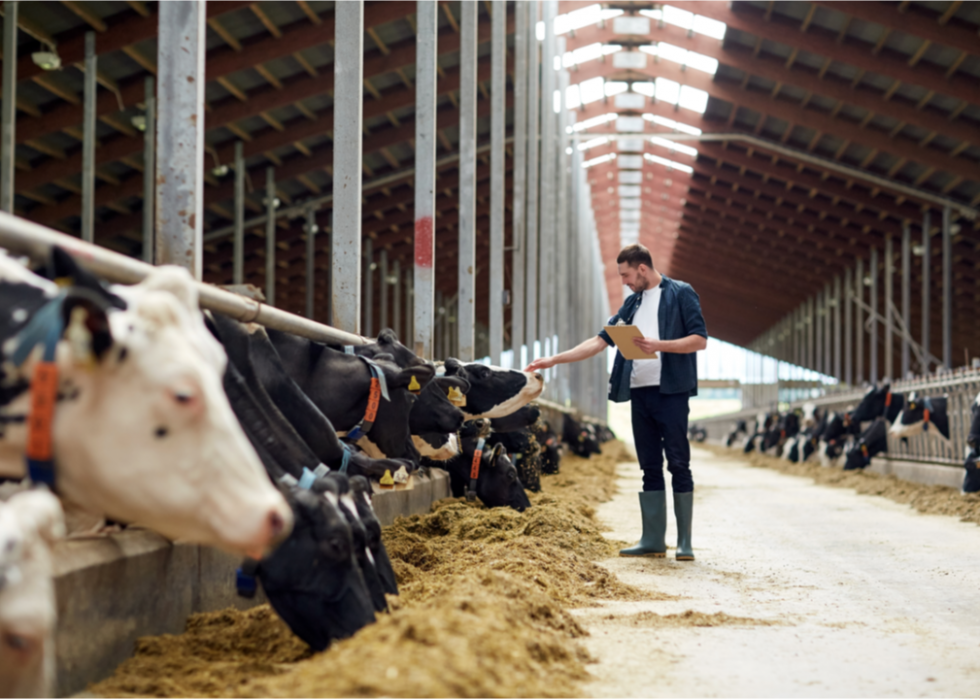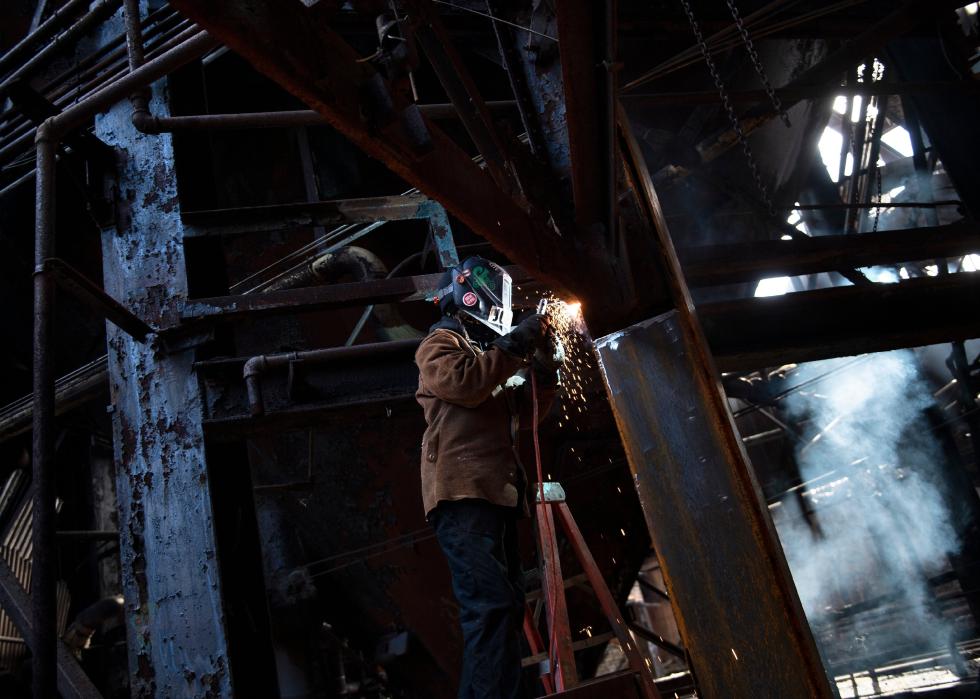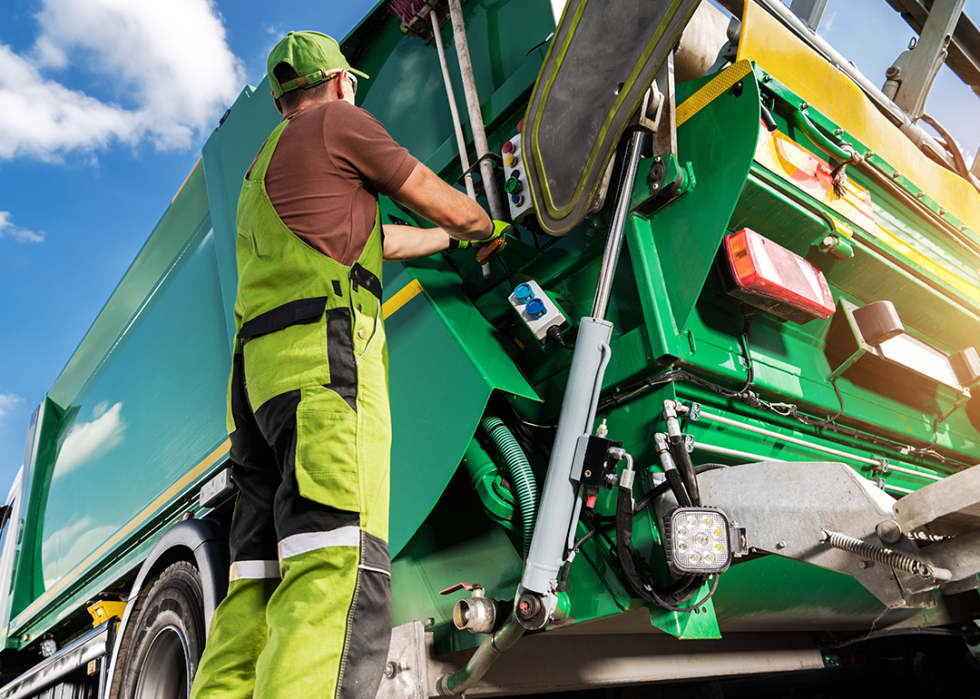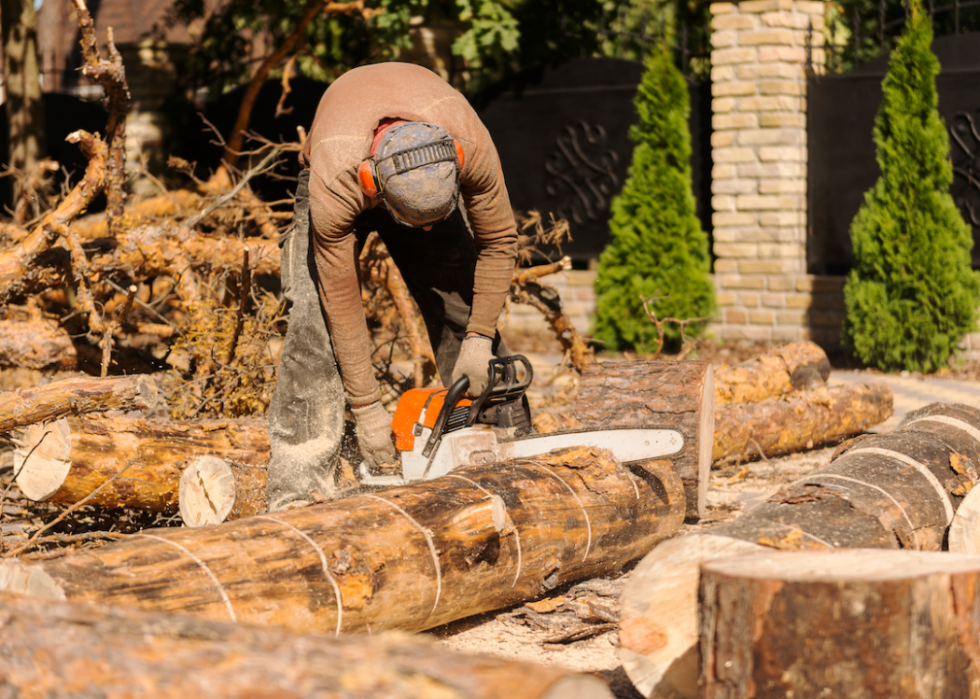
Jobs with the highest fatality rates in the US
Jobs with the highest fatality rates in the US
There were 5,283 fatal workplace injuries recorded in the United States in 2023, the most recent year with available data from the Bureau of Labor Statistics as of April 2025. That number actually represents a decrease of 3.7% from the year prior, averaging out to 3.5 fatalities for every 100,000 full-time workers. The decline in deaths—especially since the number had risen from 2021 to 2022—is a positive sign. The overall numbers also suggest that for most Americans, dying on the job is not a significant risk. Still, some of the most essential jobs in our society continue to bear a disproportionate risk of death, despite workplace protections.
People responsible for harvesting our food, mining valuable resources, or building our infrastructure work with dangerous machinery in harsh environments under strenuous conditions. While those things can get safer—and technology and regulations have lowered accident rates over time—occupational hazards will always exist.
Many of the deadliest workplace accidents in American history—like the Triangle Shirtwaist Factory fire or the Monongah mining disaster—were the result of negligent employers and a lack of worker safety standards. Others were the product of human error, serving as examples of the dangers inherent in certain industries today.
Workplace safety has come a long way over the last two centuries, often in response to public outcry following such disasters. In 1994, the annual census of workplace fatalities registered nearly 2,000 more deaths compared to 2020, in part due to more highway accidents and workplace shootings. A combination of improvements to protective legislation, like the Occupational Safety and Health Act of 1970, as well as better data collection and actionable analysis, like the Census of Fatal Occupational Injuries, has led to the worker safety standards we see today.
Stacker analyzed the occupations with the highest fatal injury rates according to 2023 data from the Bureau of Labor Statistics. Rates are calculated per 100,000 full-time worker equivalents, meaning the rate may be higher than the actual total number of fatalities, which are also provided.

#10. Farmers, ranchers, and other agricultural managers
-19.0 fatalities per 100,000 full-time equivalent workers in 2023
-Total fatal work injuries in 2023: 171
Transportation incidents—particularly overturned tractors which can weigh an average of around 5,000 pounds—are a leading cause of death among agricultural workers. Although it is not noted as a cause of death, workers in this industry also commonly face prolonged exposure to hazardous chemicals in pesticides and fertilizers.

#9. Structural iron and steel workers
-19.8 fatalities per 100,000 full-time equivalent workers in 2023
-Total fatal work injuries in 2023: 9
Iron and steel workers construct the metal frameworks of buildings or other structures. Their craft requires them to perform strenuous tasks at great heights, while balancing on narrow girders. Falls from significant heights is the most common cause of death among workers. Workers are also at a greater risk for lacerations and burns.

#8. Grounds maintenance workers
-20.5 fatalities per 100,000 full-time equivalent workers in 2023
-Total fatal work injuries in 2023: 226
On the surface, grounds maintenance work—the installation and upkeep of landscapes—may not sound particularly dangerous, but the data shows otherwise. A 2023 study published in the American Journal of Industrial Medicine found that the rate of fatal work injuries was nearly five times higher for grounds maintenance workers than the rest of the U.S. workforce. During the five-year period from 2016 to 2020, the most common causes of work-related deaths among grounds maintenance workers were transportation accidents (28%) and falls (27%), with equipment incidents and exposure to harmful substances rounding out the top causes, accounting for 23% and 18% of fatalities, respectively.

#7. Driver/sales workers and truck drivers
-26.8 fatalities per 100,000 full-time equivalent workers in 2023
-Total fatal work injuries in 2023: 984
With the majority of their working day spent on the road, delivery drivers are at a greater risk than most of being involved in a vehicular accident. In the summer of 2021, it was reported that some Amazon drivers were being instructed to forgo daily vehicle inspections, potentially ignoring safety issues like worn tire treads, jammed doors, and broken mirrors to avoid the risk of fleet vehicles being taken off the road. Transportation-related incidents are the leading cause of death among delivery drivers, hitting a five-year high in 2019, according to a 2021 BLS report. The second most common cause of death was homicide or suicide.

#6. Helpers, construction trades
-27.4 fatalities per 100,000 full-time equivalent workers in 2023
-Total fatal work injuries in 2023: 16
While helpers are not always specialized craft workers like electricians, carpenters, or brick masons, they are responsible for helping keep construction sites safe, clean, and orderly. Falls, slips, and trips are historically the leading cause of death among construction workers. However, transportation incidents, contact with dangerous substances and equipment, and electrocutions are also significant dangers that can lead to death at a construction site.

#5. Aircraft pilots and flight engineers
-31.3 fatalities per 100,000 full-time equivalent workers in 2023
-Total fatal work injuries in 2023: 62
Although plane crashes are rare, when they happen, they are usually fatal. Poor weather conditions, malfunctioning navigation systems, mechanical breakdowns, and human error are common issues across many industries, but in aviation, they are deadly. One of the riskiest but sometimes necessary maneuvers a pilot might employ is a controlled flight into terrain—the act of flying an aircraft into any terrain, like mountains or water. A CDC study revealed that most deadly aircraft crashes in Alaska were a result of a CFIT maneuver.

#4. Refuse and recyclable material collectors
-41.4 fatalities per 100,000 full-time equivalent workers in 2023
-Total fatal work injuries in 2023: 41
Transportation-related incidents are the most common cause of death among waste collectors. This includes being involved in a crash, being struck by the truck while outside of it, or falling off the back.

#3. Roofers
-51.8 fatalities per 100,000 full-time equivalent workers in 2023
-Total fatal work injuries in 2023: 113
Fatalities among roofers are most often caused by falling from roofs, ladders, or scaffolding. Falls can happen due to inexperience, user error, malfunctioning safety equipment, or neglecting to use any fall arrest system. Because roofers are exposed to direct sunlight and high temperatures in the summer, heat-related illnesses are also a risk.

#2. Fishing and hunting workers
-86.9 fatalities per 100,000 full-time equivalent workers in 2023
-Total fatal work injuries in 2023: 19
Commercial fishers, hunters, and trappers face some of the most hazardous work conditions of any profession, contending with dangerous weather, wildlife, and machinery. Roughly half of commercial fishing fatalities between 2000 and 2019 were a result of a disaster that damaged the vessel—like flooding, rogue waves, or storms—according to the CDC. About 30% occurred when a fishing worker fell overboard. Working in remote environments—whether out at sea or deep in the wilderness—means that timely access to hospitals is limited in case of life-threatening emergencies.

#1. Logging workers
-98.9 fatalities per 100,000 full-time equivalent workers in 2023
-Total fatal work injuries in 2023: 52
Loggers are responsible for cutting down trees or limbs and transporting the pieces. Their work puts them at risk of falling from significant heights, being injured by equipment designed to cut through wood, and being struck by logs weighing thousands of pounds. Being struck was the most common cause of death, with the head being the most frequent body part involved in fatalities, according to a Penn State University study that looked at logging fatalities between 2010 and 2020. The study also revealed that poor decision-making was a contributing factor in fatal incidents.



